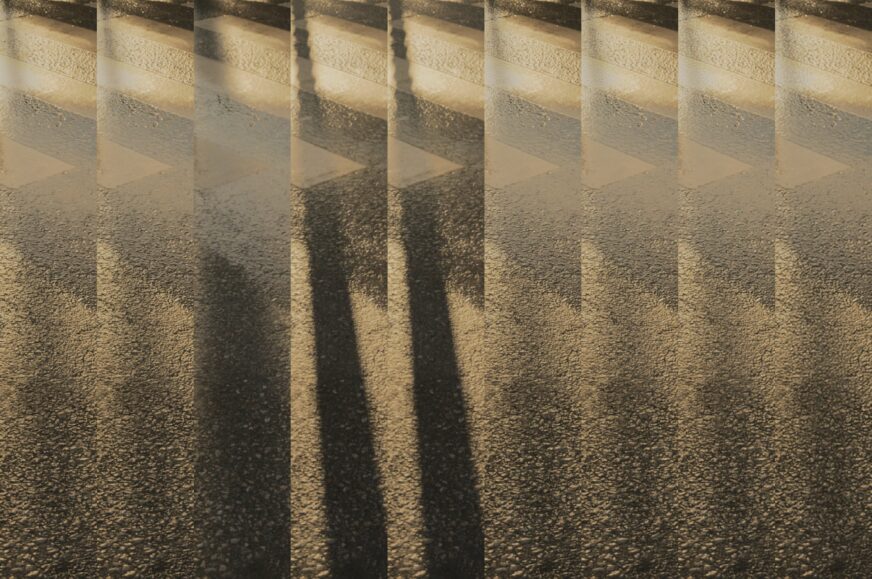Visual Analysis II
Alan Wake II is the first game to support Nvidia DLSS 3.5 from the start. In addition to the technological aspect, there is also the high popularity among gamers. This gives us the basic reasons to take a close look at the performance under different settings. In diving in with the gaming performance, we will be interested not only in the visual side, but also the power consumption. Not just of the graphics card, but the CPU as well.
Image comparison of different DLSS settings
This comparison will be about the different levels of DLSS. This upscaling has progressive levels from Quality, Balanced, through Performance and Ultra Performance. For these, the internal resolution at which the game actually runs and from which DLSS 3.5 scales the image up to the target resolution (in this case 2560×1440) is gradually reduced – for example, for Performance it should be 1280×720 pixels, for Ultra Performance it’s only 853×480 pixels (the scaling factor is 3x).
We compare the DLSS image in each quality level with the DLAA mode, which is a special DLSS mode that does not use any upscaling, but applies the same temporal filtering and reconstruction (and that includes anti-aliasing similar to TAA) as DLSS. It’s probably a fairer comparison than comparing DLSS against a “native image” which lacks anti-aliasing.
Both versions use 2560×1440 resolution, Ray Tracing on and Ray Reconstruction on. We don’t have frame generation active (neither did the previous comparisons) so that we don’t end up examining the differences between a fully rendered and a generated image, which wouldn’t be fair.
DLSS Quality
For the first scene, we picked this poster space with text that should give the upscaling a run for its money. However, you can’t really see much of the impact yet in DLSS (Quality) mode, the highest quality and lowest speed mode, which is on the right side of the image. Or rather – there will be some degradation due to the lower rendering mode, but it’s hard to distinguish visually. Instead of posters, the stumbling block turned out to be the railing on the balconies. The difference is best seen when using split-screen mode rather than side-by-side display (we can’t use that here, unfortunately, because the javascript applet that allows you to embed a “sliding comparison” doesn’t work).
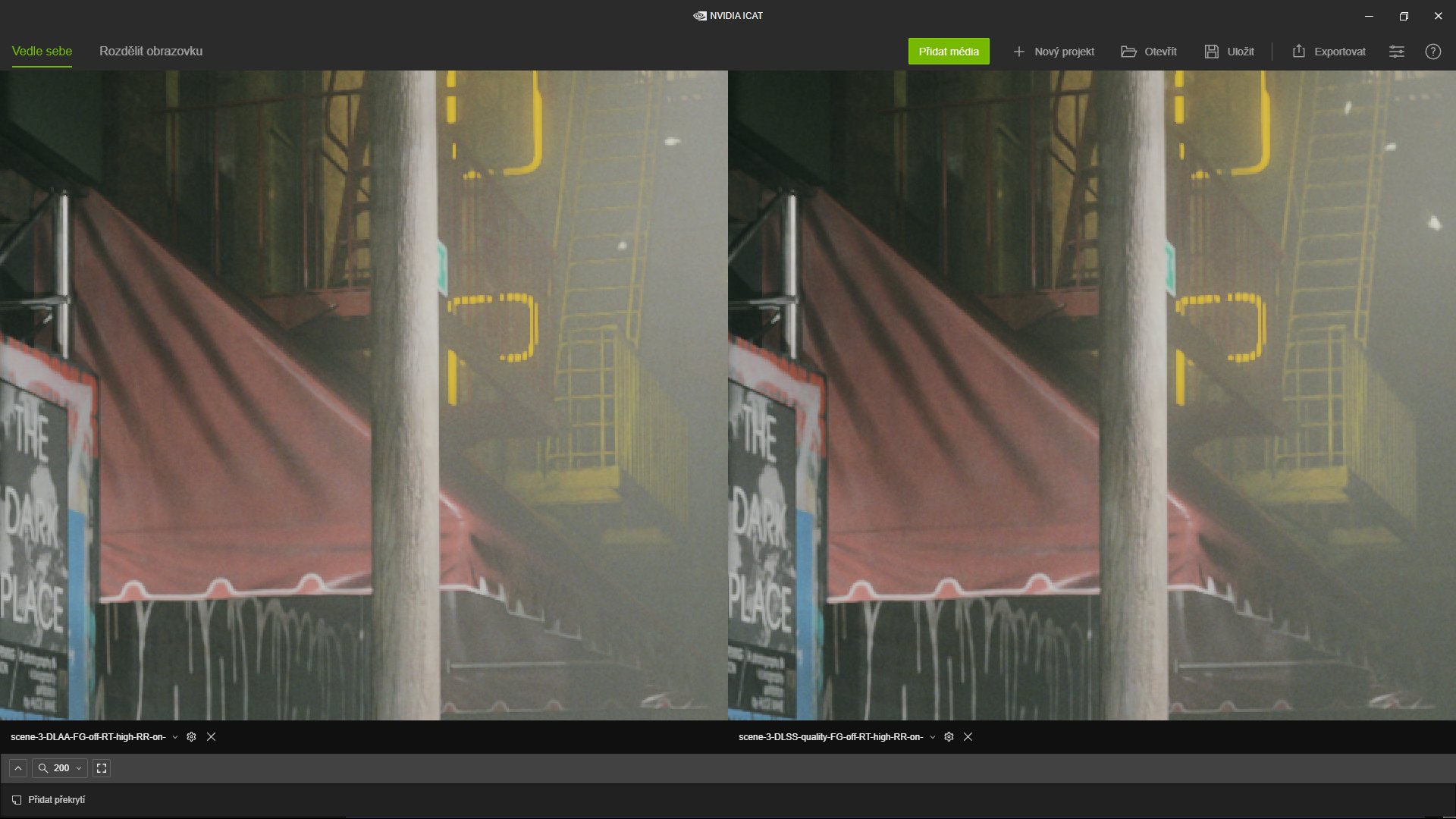
In general, the more aggressive the DLSS you use, the less distinct the individual vertical bars in the railing will be – a little in the first red one, but more so in the more distant yellow railing, where the perception of being made up of individual bars is lost and it starts to look like a sort of joint mass. Albeit only slightly so for now, in Quality mode.
In the second scene, the DLSS is perhaps most evident in the pattern of the fence to the right of the van. It is apparently so subtle that any undersampling and upscaling – even in the moderate Quality mode – already leads to a large distortions, with the upscaling AI getting fooled and the pixels merging into something else instead of the original pattern (it’s possible that not only DLSS but perhaps other smoothing methods will often crash and burn on this). You can see how the details are somewhat degraded in other places. For example, you can see how the contours of the conifers on the distant horizon are distorted, but Quality mode doesn’t yet do this as significantly as faster modes.
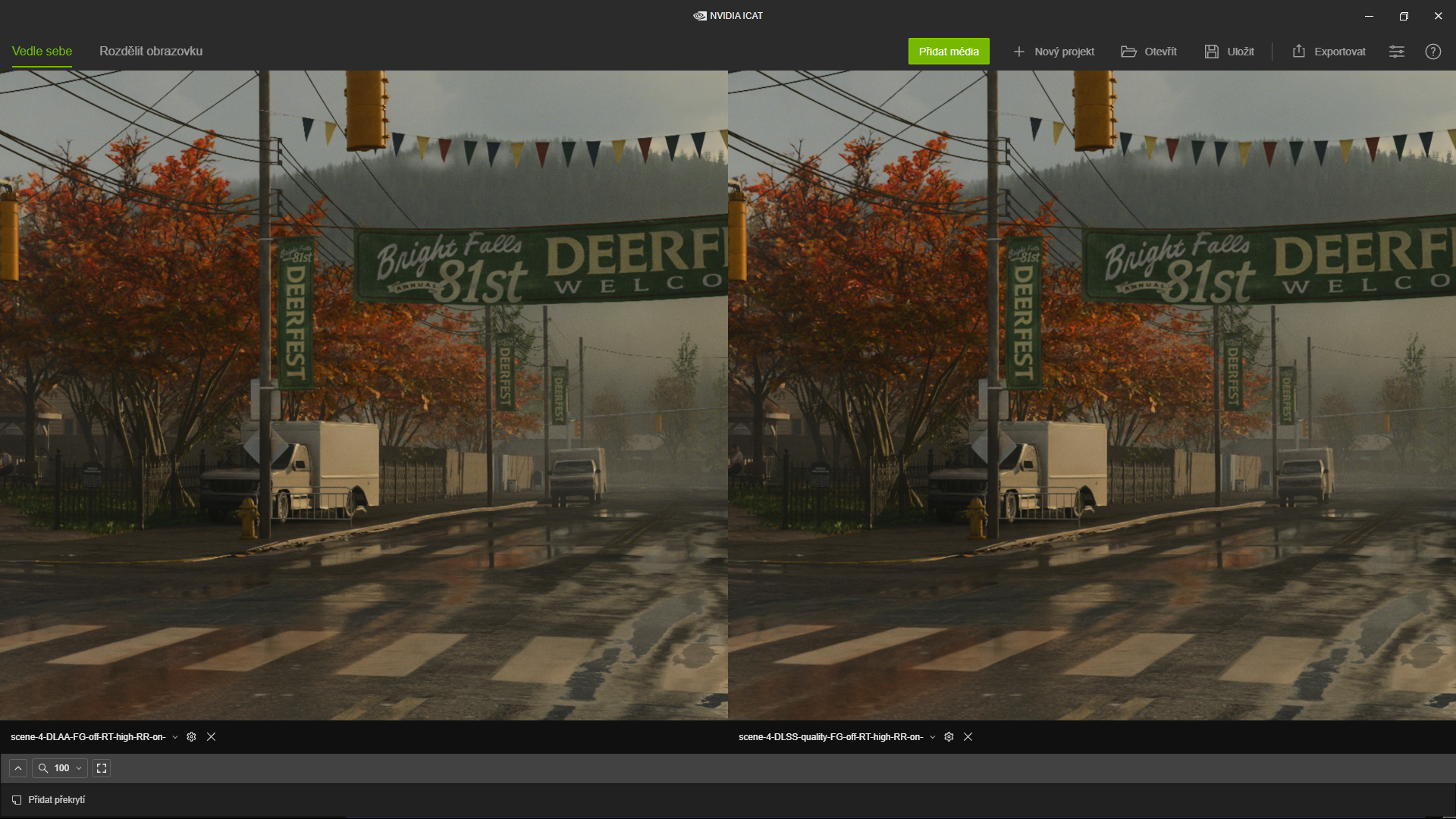
In this scene, we also noticed aliasing on the wires and also, for example, on the outline of the curb on the corner by the van. It doesn’t seem to be the fault of the upscaling itself as it happens with DLAA too.
DLSS Balanced
In Balanced mode, the effects already seen above are amplified. The blending of the bars in the yellow railing is more apparent, and the pattern of the red one is less clear. The text on the posters also starts to degrade a bit, but it’s not extremely sharp in the original either, which obscures the difference a bit.
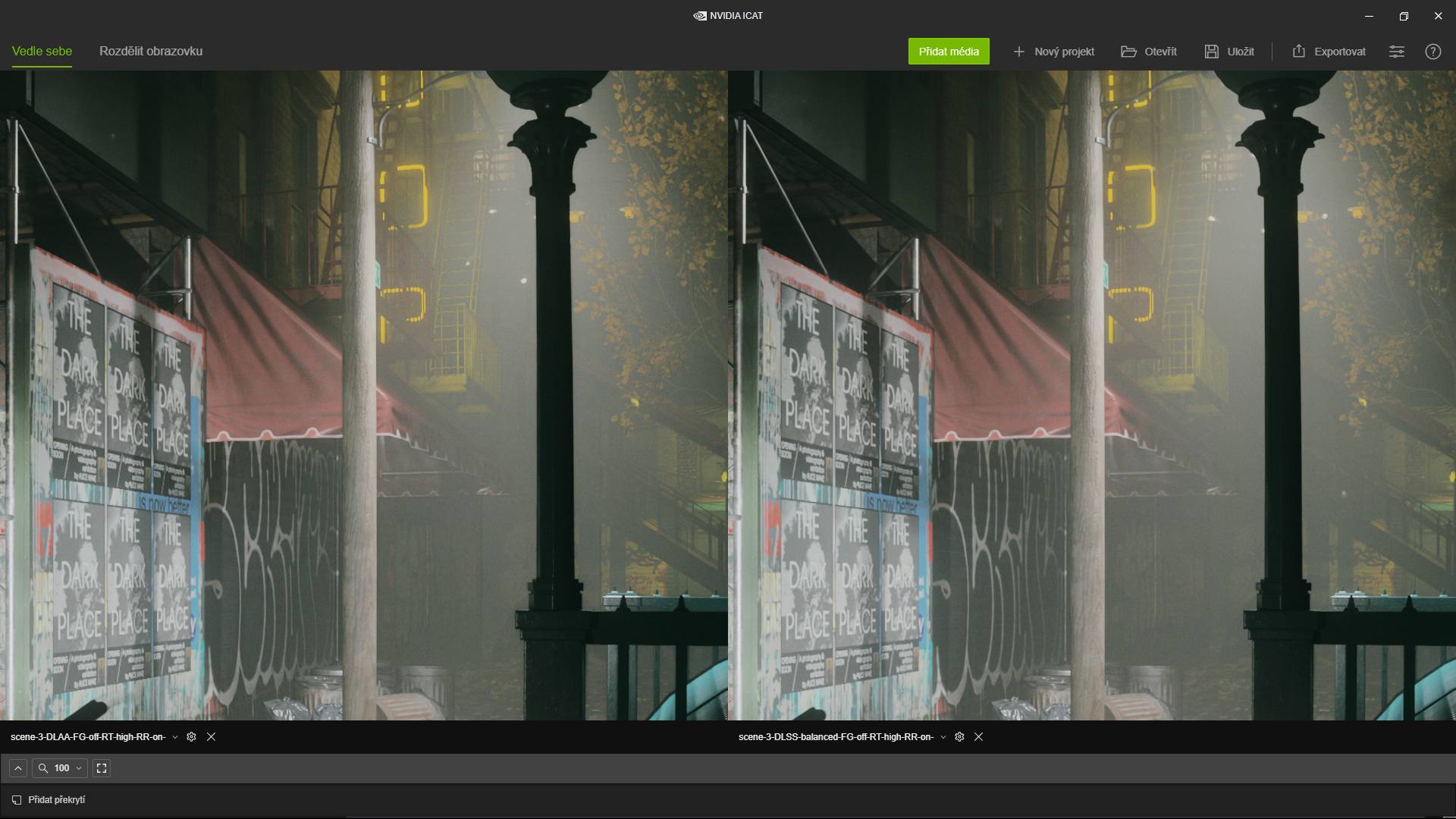
But notice also how the contours on the staircase and the background visible to the right of the dark lantern column are lost. The bricks on the wall, which have also suffered a bit in Quality mode are also halfway to “fusing” together, but not quite there yet.
The second scene essentially repeats the effects already seen in Quality mode, but the breakdown of the fence pattern is more pronounced, as are the effects on the details of the tree silhouettes on the horizon.

DLSS Performance
The effects on the railings (yellow railings blending together, less clearly rendered structures) are again amplified, and again we have the effect of the lines of the staircase and other objects (bricks) disappearing into the fog to the right of the lamp post, while you can see them when using DLAA. Here you can see quite clearly how the low resolution negatively affects the quality of the text on the posters.
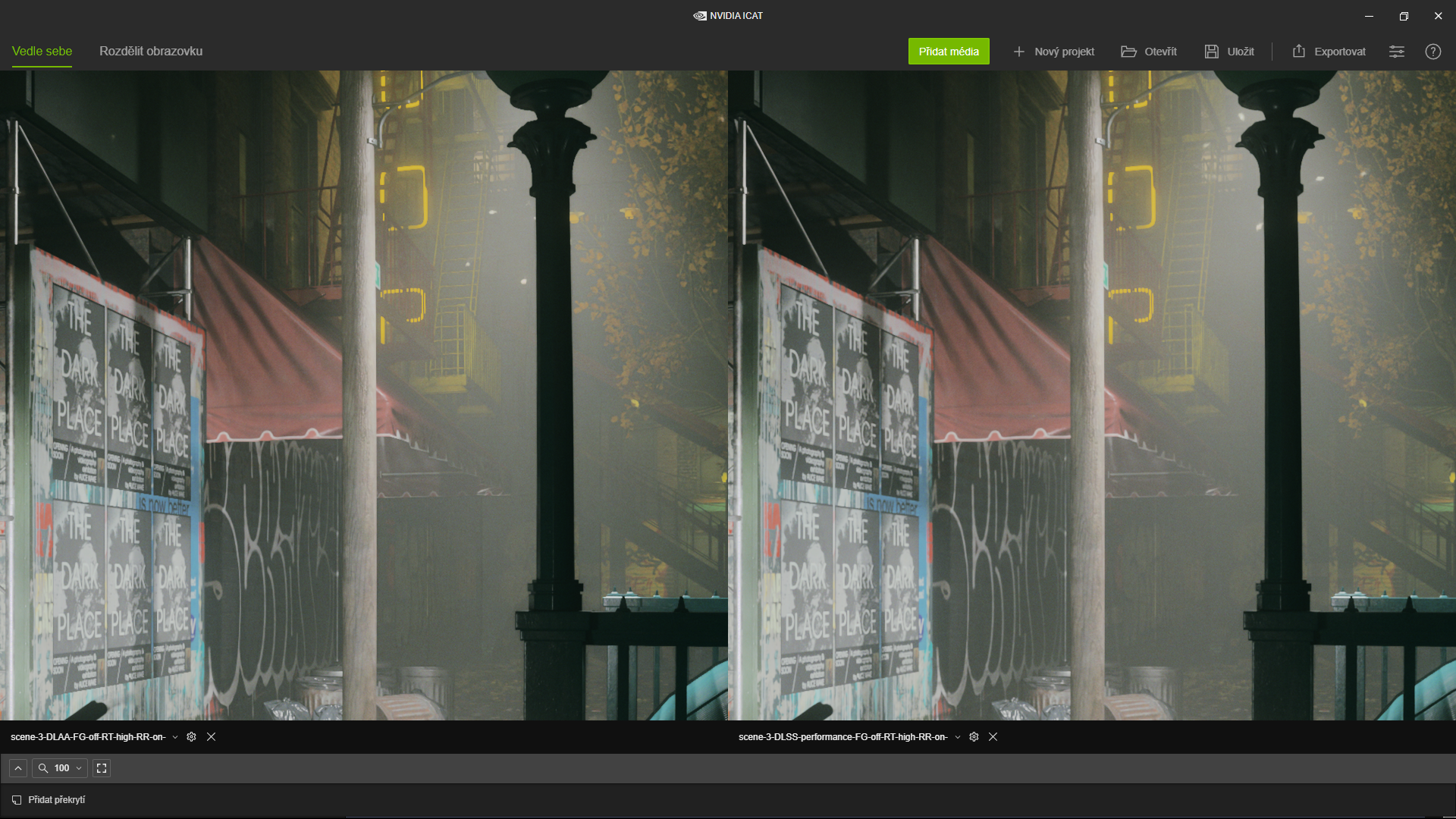
In the second scene we again observe the preogressive degradation of the same fence and spruce trees on the horizon, where the effect of upscaling is clearly visible and the negative impact on the quality of detail is logically greater now. But in Performance mode, the reduced detail is already noticeable more generally, even on buildings for example.
Ironically, the appearance of the wires has improved in Performance mode. They’re not as prominent, they’re thinner, less dark, and more blended into the background, so even if they’re not free of aliasing, it’s less distracting in the end. But the aliasing on that curb has seemingly disappeared completely. The question is whether this points to some problem at higher settings, or whether Performance mode simply enjoys a lucky side effect of the overall blurring caused by the lower resolution, which manages to alleviate the problematic aliasing a bit (since blurring is one way to smooth out aliasing).
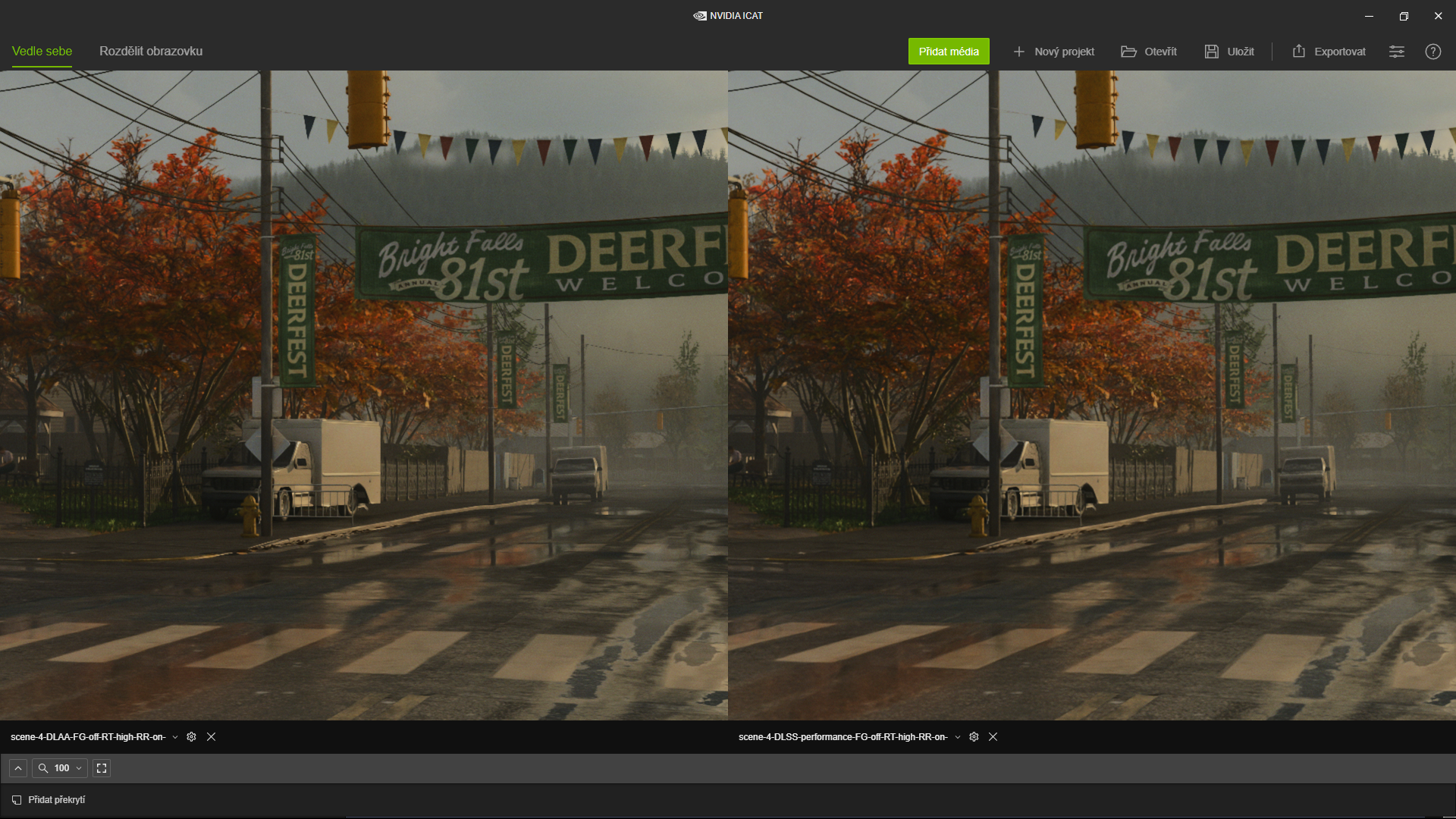
DLSS Ultra Performance
DLSS Ultra Performance with its extreme scaling, which is no longer suitable for lower target resolutions (it was originally presented as a solution for gaming at the target resolution of 8K, to which it upscales from 2560 × 1440), has the worst effects on quality, of course, every adverse effect mentioned earlier is strongest here.
The quality of the text has deteriorated quite a bit, but there is a general blurring on the walls, and the railings and ladders are looking really garbled. The sharpness of the foliage on the tree has also deteriorated significantly, and you can even see the blurring of the container visible in the lower right corner in the foreground.
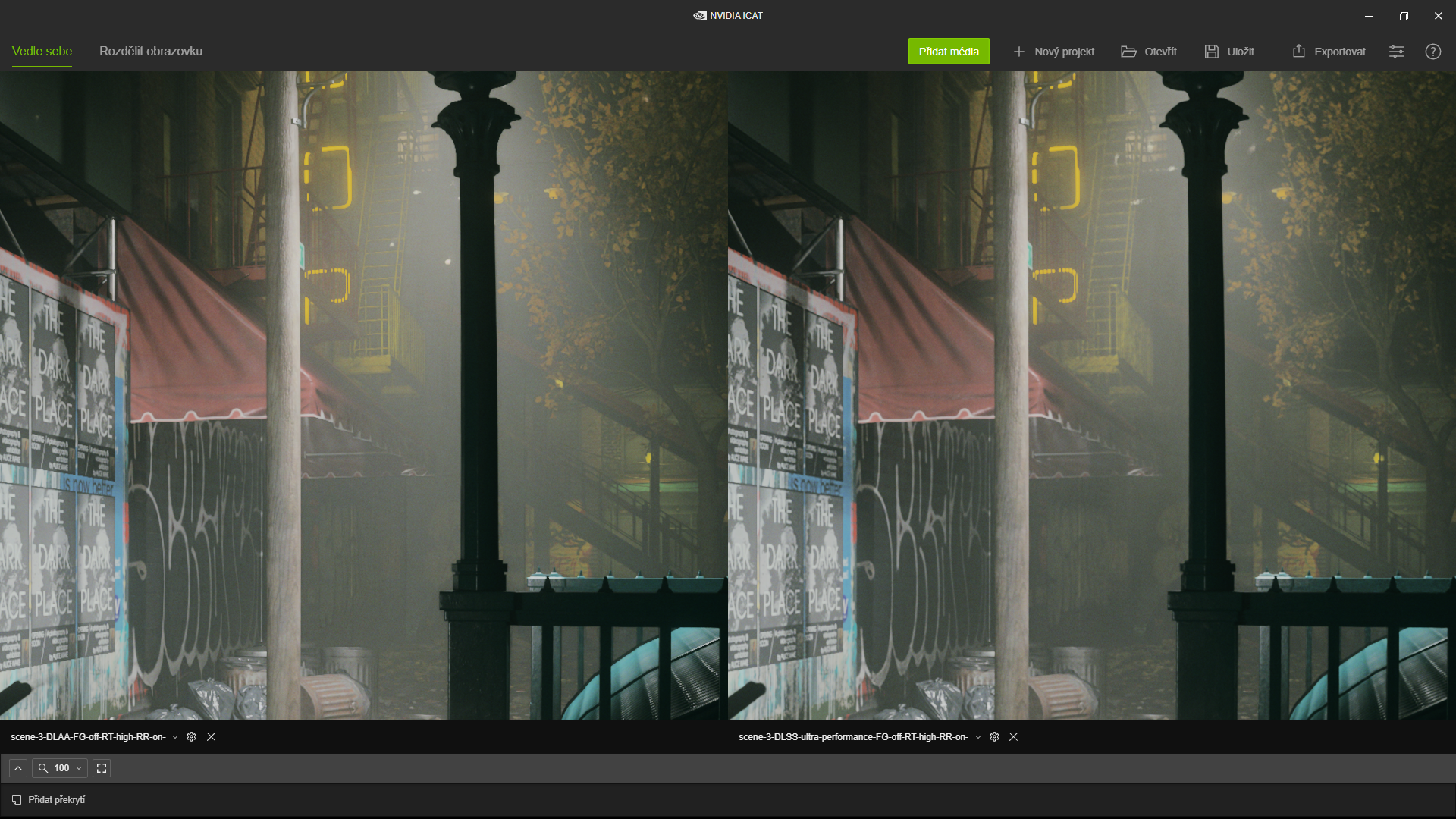
This image already shows a lot of signs of being upscaled, but again, you have to give it credit that the temporal reconstruction saves a lot and the results aren’t as bad as you’d expect from a 3x scaling factor. You have to keep that in mind and don’t judge the quality degradation as that much of a negative, precisely due to the fact that an unsophisticated upscaling would have turned out even worse. And it’s not that the game isn’t playable with this setup. Considering that Ultra Performance improves FPS pretty significantly, that’s probably acceptable to some people.
The second scene also has quite a lot of signs of upscaling, you can already see the worse level of detail when comparing, for example, the texture of the asphalt in the foreground, and all of the previously cited problems are again more pronounced here, the distortion or outright destruction of the fence pattern is particularly strong here. The trees with their autumn leaves have also become much coarsely-drawn. The nice thing is that the “blur” is not noticeable at first glance, but when you compare it you can see a big change, they starts to look a bit like a pointillist painting. The details and and rendering deteriorate pretty much everywhere (even on the rather high contrast traffic lights).
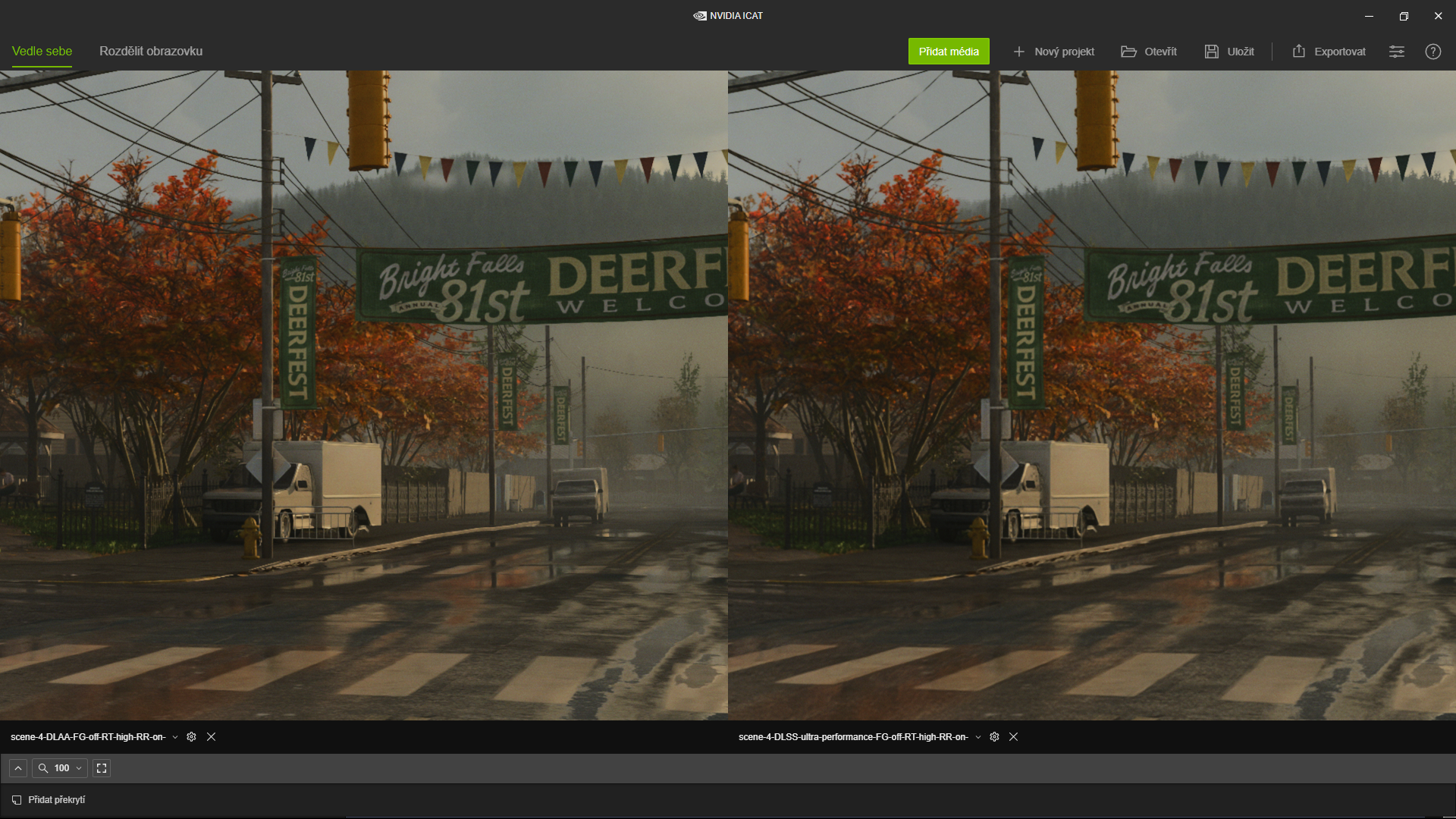
Ironically, the situation with the aliasing of wires has improved again, they are smoother and actually look better. However, due to the low real resolution, they often completely disappear in places, which was not as much of a problem in Quality mode.
In general, however, the quality of this Ultra Performance mode is already reduced by quite a bit (which is to be expected, of course) and doesn’t match what a 2560×1440 image should look like. Those FPS gained in Ultra Performance mode are definitely not coming free of cost, it should be pointed out. So, just as one can’t say that this mode is unusable, one can’t somehow downplay the negatives either.
Artifacts are the price of higher performance, not the end of the world
Perhaps we should clarify that all these DLSS modes have their justification precisely because of their performance benefits. It has to be clarified that we’ve been focusing on finding the differences here, and thus the talk has always been about the downsides, se perhaps it sounds as if DLSS has nothing but negatives. That is not the case. But you have to remember that its goal is higher performance, which means for example that you can play the game at smooth FPS where without DLSS, you simply wouldn’t be able to. So those flaws in the image should be considered while keeping in mind that you are getting something (performance) in return. And in that context, they may be acceptable to you (the alternative, which is to flat out lower the output resolution of the game, also degrades the quality). So we don’t want to denigrate DLSS, you can see the positive side in the performance graphs in the next chapters.
It’s probably wise to avoid the Ultra Performance extreme mode if you can keep the game at playable FPS without it. Though even the negative impact of Performance mode is quite noticeable, it’s still not as bad for the visuals. But the higher you go with the settings, the less impact DLSS has, and proportionally, you don’t have to worry as much about Balanced and Quality.
The lesson here is unsurprising: If you want to enjoy the visuals and you’re not playing competitively against anyone in a multiplayer shooter or rally suffering from not having a smooth framerate, it’s a good idea stay away from unnecessarily aggressive upscaling modes than you need (just in order to get a higher number on the FPS counter in the corner), instead try to use the least aggressive DLSS mode you can still afford with your GPU performance. Which is probably obvious, and I don’t expect anyone needs to be reminded of that…
- Contents
- Visual analysis I
- Visual Analysis II
- How we tested
- Game performance tests...
- ... and power consumption tests
- Conclusion





